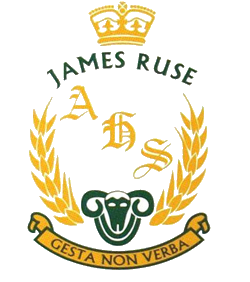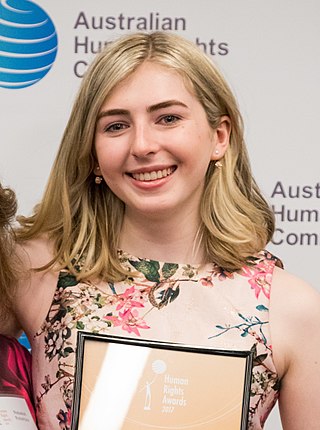Recipients
| Year of award | Name | Post nominals | Born | Died | Comments | Notes |
|---|---|---|---|---|---|---|
| 1960 | Sir Macfarlane Burnet | OM | 1899 | 1985 | Virologist; 1960 Nobel Prize in Physiology or Medicine co-recipient | |
| 1961 | Joan Sutherland | CBE | 1926 | 2010 | Opera singer | |
| 1962 | Jock Sturrock | 1915 | 1997 | Yachtsman | ||
| 1963 | Sir John Eccles | 1903 | 1997 | Neurophysiologist; 1963 Nobel Prize in Physiology or Medicine co-recipient | ||
| 1964 | Dawn Fraser | 1937 | Swimmer; gold medal winner at 1956, 1960 and 1964 Summer Olympic Games | |||
| 1965 | Robert Helpmann | CBE | 1909 | 1986 | Actor; ballet dancer; director | |
| 1966 | Jack Brabham | OBE | 1926 | 2014 | Racing driver; Formula One champion in 1959, 1960 and 1966 | |
| 1967 | The Seekers | N/A | Music group | |||
| 1968 | Lionel Rose | MBE | 1948 | 2011 | Boxer; first Indigenous Australian to win a world boxing title (1968) | |
| 1969 | Lord Casey | GCMG , CH , DSO , MC , PC | 1890 | 1976 | Politician, diplomat, Governor-General of Australia (1965–1969) | |
| 1970 | Cardinal Sir Norman Gilroy | KBE | 1896 | 1977 | Clergyman; first Australian-born Cardinal of the Roman Catholic Church | |
| 1971 | Evonne Goolagong | 1951 | Tennis player | |||
| 1972 | Shane Gould | 1956 | Swimmer; winner of three gold medals, a silver and bronze in 1972 Summer Olympics | |||
| 1973 | Patrick White | 1912 | 1990 | Author; 1973 Nobel Prize for Literature recipient | ||
| 1974 | Sir Bernard Heinze | 1894 | 1982 | Conductor | ||
| 1975 | John Cornforth | CBE | 1917 | 2013 | Scientist; 1975 Nobel Prize in Chemistry recipient | |
| MAJGEN Alan Stretton | AO , CBE | 1922 | 2012 | Australian Army officer; managed Cyclone Tracy cleanup | ||
| 1976 | LTCOL Sir Edward "Weary" Dunlop | CMG , OBE | 1907 | 1993 | Military surgeon; World War II prisoner of war | |
| 1977 | Raigh Roe | CBE | 1922 | 2014 | President of the Country Women's Association | |
| Sir Murray Tyrrell | KCVO , CBE | 1913 | 1994 | Official secretary to six governors-general | ||
| 1978 | Alan Bond | 1938 | 2015 | Businessman | ||
| Galarrwuy Yunupingu | 1948 | 2023 | Indigenous land rights activist | [4] | ||
| 1979 | Neville Bonner | 1922 | 1999 | First Aboriginal person elected to the Parliament of Australia | ||
| Harry Butler | OBE | 1930 | 2015 | Naturalist | ||
| 1980 | Manning Clark | AC | 1915 | 1991 | Historian | |
| 1981 | Sir John Crawford | 1910 | 1984 | Economist | ||
| 1982 | Sir Edward Williams | KCMG , KBE , QC | 1921 | 1999 | Judge of the Supreme Court of Queensland; chairman of the 1982 Brisbane Commonwealth Games Foundation | |
| 1983 | Robert de Castella | MBE | 1957 | Marathon runner | ||
| 1984 | Lowitja O'Donoghue | CBE | 1932 | 2024 | Aboriginal health worker; inaugural chairperson of the Aboriginal and Torres Strait Islander Commission (1990–1996) | |
| 1985 | Paul Hogan | 1939 | Actor | |||
| 1986 | Dick Smith | 1944 | Entrepreneur | |||
| 1987 | John Farnham | 1949 | Singer, entertainer | |||
| 1988 | Kay Cottee | 1954 | First female sailor to perform a single-handed, non-stop circumnavigation of the world (1988) | |||
| 1989 | Allan Border | AO | 1955 | Australian cricket team captain | ||
| 1990 | Fred Hollows | 1921 | 1993 | Ophthalmologist; founder of The Fred Hollows Foundation | ||
| 1991 | Peter Hollingworth | AO , OBE | 1935 | Anglican Archbishop of Brisbane; head, Brotherhood of St. Lawrence; governor-general | ||
| 1992 | Mandawuy Yunupingu | 1956 | 2013 | Singer, Yothu Yindi | ||
| 1993 | No award made: period of award changed from the previous year to the year ahead in 1994; i.e. Mandawuy Yunupingu was named Australian of the Year for 1992 in 1993 and Ian Kiernan was named Australian of the Year for 1994 in 1994 | |||||
| 1994 | Ian Kiernan | OAM | 1940 | 2018 | Environmentalist; founder of Clean Up Australia and Clean Up the World | |
| 1995 | Arthur Boyd | AC , OBE | 1920 | 1999 | Artist | |
| 1996 | John Yu | AM | 1934 | Paediatrician, CEO of the Royal Alexandra Hospital for Children | ||
| 1997 | Peter Doherty | AC | 1940 | Veterinarian; immunologist; 1996 Nobel Prize in Physiology or Medicine recipient | ||
| 1998 | Cathy Freeman | OAM | 1973 | Athlete; also Young Australian of the Year in 1990 | ||
| 1999 | Mark Taylor | AO | 1964 | Australian cricket team captain | ||
| 2000 | Sir Gustav Nossal | AC , CBE | 1931 | Biologist | ||
| 2001 | LTGEN Peter Cosgrove | AC , MC | 1947 |
| ||
| 2002 | Pat Rafter | 1972 | Tennis player | |||
| 2003 | Fiona Stanley | AC | 1946 | Epidemiologist | ||
| 2004 | Steve Waugh | AO | 1965 | Australian cricket team captain and humanitarian | ||
| 2005 | Fiona Wood | AM | 1958 | Plastic surgeon; worked with victims of the 2002 Bali bombings | ||
| 2006 | Ian Frazer | 1953 | Immunologist | |||
| 2007 | Tim Flannery | 1956 | Scientist; global warming activist | |||
| 2008 | Lee Kernaghan | OAM | 1964 | Singer | ||
| 2009 | Mick Dodson | AM | 1950 | Indigenous leader | ||
| 2010 | Patrick McGorry | AO | 1953 | Psychiatrist | [5] | |
| 2011 | Simon McKeon | AO | 1955 | Philanthropist businessman | [6] | |
| 2012 | Geoffrey Rush | AC | 1951 | Actor and film producer | [7] | |
| 2013 | Ita Buttrose | AO , OBE | 1942 | Journalist and businesswoman, founding editor of Cleo | [8] | |
| 2014 | Adam Goodes | 1980 | Australian rules footballer and Indigenous community leader | |||
| 2015 | Rosie Batty | 1962 | Domestic violence campaigner | [9] | ||
| 2016 | LTGEN David Morrison | AO | 1956 | Commitment to gender equality, diversity and inclusion | [10] | |
| 2017 | Alan Mackay-Sim | 1951 | 2023 | Biomedical scientist treating spinal cord injuries | ||
| 2018 | Michelle Simmons | 1967 | Scientia professor of quantum physics in the faculty of science at the University of New South Wales | |||
| 2019 | Craig Challen | SC , OAM | Cave divers who participated in the Tham Luang cave rescue | [11] | ||
| Richard Harris | SC , OAM | |||||
| 2020 | Dr James Muecke | AM | 1963 | Eye surgeon and founder of Sight for All | [12] [13] | |
| 2021 | Grace Tame | 1994 | Advocate for survivors of sexual assault | |||
| 2022 | Dylan Alcott | AO | 1990 | Paralympic athlete, advocate for disability | ||
| 2023 | Taryn Brumfitt | 1978 | Positive body image advocate and founder of the Body Image Movement | [14] | ||
| 2024 | Georgina Long | AO | 1970 | Melanoma researchers | [15] | |
| Richard Scolyer | AO | 1966 | ||||
| 2025 | Neale Daniher | AO | 1961 | Former Australian rules footballer and coach; charity co-founder, advocate for motor neurone disease research | [16] | |










